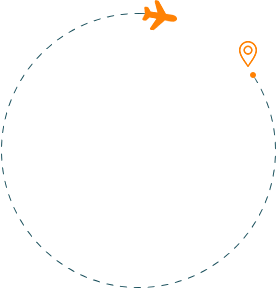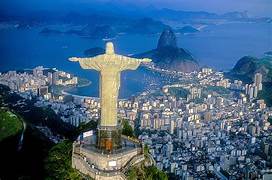Sao Paulo’s history began in 1554, when Jesuit priests founded a small mission atop a hill. What started as a humble settlement soon grew into the beating heart of Colonial Brazil, thanks to the Bandeirantes — explorers who helped expand the nation’s borders. By the 19th century, coffee transformed Sao Paulo’s economy, fueling growth and laying the foundations of a modern metropolis. Then came the industrial boom, turning the city into Brazil’s financial and cultural capital.
Today, Sao Paulo’s diversity is its greatest strength — home to the largest Arab, Italian, and Japanese communities outside their home countries. This mix of cultures has created something truly special: a city that celebrates every flavor, face, and story. The Greater Sao Paulo area now holds nearly 20 million residents, while the broader Macrometropolis region boasts over 30 million — making it the largest urban zone in the Southern Hemisphere.
Top Things to Do in Sao Paulo
If culture had a capital, Sao Paulo would wear the crown. From cutting-edge museums to street murals that stretch for blocks, creativity is everywhere. Here’s what not to miss:
Sao Paulo Museum of Art (MASP) – An icon with its striking red frame and suspended design.
Ibirapuera Park – The city’s green heart, perfect for jogging, cycling, or a lakeside picnic.
Pinacoteca do Estado – Brazil’s oldest art museum and a must for art lovers.
Museum of the Portuguese Language – Celebrating Brazil’s linguistic and cultural heritage.
Latin American Memorial – A powerful architectural tribute to Latin America’s shared identity.
Football Museum, Museum of Ipiranga, Catavento Museum, and MIS – Each adds a unique layer to Brazil’s story.
Annual Highlights
Sao Paulo’s calendar is packed with global events:
Sao Paulo Gay Pride Parade – The second-largest LGBTQ+ parade in the world.
Lollapalooza Brazil & Primavera Sound – Unmissable music festivals.
Sao Paulo Art Biennial, Comic Con Experience (CCXP), and Sao Paulo Fashion Week – A blend of art, pop culture, and style.
Formula 1 Brazilian Grand Prix, Saint Silvester Road Race, and NFL Brazil Games – For the adrenaline junkies.
When to Visit Sao Paulo
Thanks to its subtropical climate, Sao Paulo is a year-round destination — but a few seasons stand out:
Spring (Sept–Nov): The best time to visit. Mild weather, fewer crowds, and events like the International Film Festival, Restaurant Week, and the Brazilian Grand Prix.
Summer (Dec–Feb): Warm, vibrant, and full of festivals. Expect temperatures around 25 °C (77 °F) with a few tropical showers.
Autumn (Mar–May): Mild, sunny days — ideal for exploring the city on foot.
Winter (Jun–Aug): Cool and dry, perfect for cozy getaways to nearby towns like Campos do Jordao.
Travel Costs & Visa Info
Sao Paulo is surprisingly budget-friendly for a global metropolis. A five-day trip can cost around $290 USD per person (excluding flights), including mid-range stays, meals, and attractions.
Visa Requirements
Travelers from visa-exempt countries can enter easily, but others may need a Brazil tourist visa or eVisa.
Countries eligible for eVisa:
Canada USA Australia Japan
Typical visa fees:
-
Tourist (Single Entry): $160 – $200
-
Tourist (Multiple Entry): $280 – $350
Make sure your passport is valid for at least six months beyond your travel date.
What to Eat in Sao Paulo
If you love food, you’re in for a treat — Sao Paulo is Brazil’s culinary capital. From Michelin-starred dining to bustling markets, every bite tells a story.
Must-try dishes:
-
Picanha – The star of Brazilian barbecues.
-
Moqueca – A fragrant seafood stew with coconut milk and palm oil.
-
Feijoada – The national comfort dish of black beans and pork.
-
Pao de Queijo – Addictive cheesy bread rolls.
-
Acaí Bowl – Brazil’s famous purple superfood snack.
-
Duck Hearts & Barreado – Local favorites spotlighted by National Geographic Traveller UK.
For authentic flavors, head to Mercado Municipal de Sao Paulo — and don’t leave without trying their iconic mortadella sandwich.
Getting There
By Air:
Sao Paulo is served by two major airports:
-
Guarulhos International Airport (GRU) – The main international hub.
-
Congonhas Airport (CGH) – Convenient for domestic flights.
GRU is about 25 km (15 mi) from downtown and easily accessible by taxi, train, airport bus, or rental car.
By Bus:
The Tiete Bus Terminal is one of the largest in the world, connecting São Paulo with cities across Brazil and neighboring countries — a scenic and affordable option for travelers.
Why Sao Paulo Should Be on Your 2025 Bucket List
Sao Paulo isn’t just a city — it’s an experience.
It’s skyscrapers and samba, street art and fine dining, tradition and innovation sharing the same skyline. Whether you’re wandering through Ibirapuera Park, dancing at Lollapalooza, or enjoying a steaming bowl of Feijoada in a corner café, São Paulo will leave you inspired — and just maybe, a little bit addicted. Pack your bags, bring your curiosity, and let Sao Paulo 2025 show you why it’s one of the most fascinating cities in the world.
.jpg)

